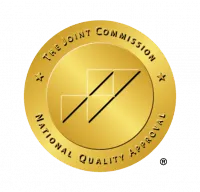Dual Diagnosis, Co-Occurring Disorders, & Comorbidity: What’s the Difference?
There is a strong link between mental illness and substance abuse. Many people diagnosed with a substance use disorder are also diagnosed with a mental illness. The terms dual-diagnosis, co-occurring disorders, and comorbidity are often used interchangeably to describe having more than one condition at the same time. But do they actually mean the same thing?
Dual diagnosis and co-occurring disorders are, in fact, synonymous—although co-occurring is preferred when referring to having both a mental and substance use disorder at the same time. Comorbid disorders are slightly different in that the two conditions can occur either simultaneously, or one after the other.
Having a mental illness does not necessarily cause a substance use disorder. The inverse is also true. However, those with mental illness or substance use disorders are at much higher risk than the general population for having the other condition.
What Is a Dual Diagnosis?

The term “dual diagnosis” refers to having two or more conditions simultaneously, as distinct diagnoses. It is also appropriate when more than two conditions exist. For example, a person could be diagnosed with both a mental disorder and a substance use disorder, or both diabetes and high blood pressure.
Dual diagnosis was first used in the 1980s to refer to individuals with severe mental illness and substance use disorders. Today, the Substance Abuse and Mental Health Services Administration (SAMSHA) prefers the term co-occurring disorders.
Dual diagnosis quick facts:
- The more severe the mental illness, the higher the risk for a substance use disorder (SUD).
- Males aged 18 to 44 are at the greatest risk for a dual diagnosis of mental illness and SUD.
- Alcohol is the most commonly used substance by people diagnosed with mental illnesses, followed by marijuana and cocaine.
What Is a Co-Occurring Disorder?
Co-occurring disorder, like dual diagnosis, refers to two conditions that occur at the same time. More specifically, it usually refers to co-occurring substance use disorders and mental illness.
To be diagnosed with a co-occurring disorder, both conditions must exist independently: Neither can simply be a cluster of symptoms caused by the other. In this case, either substance use or mental illness can present first. Interactions between the two disorders can worsen the course of each of them.
The most common combination is a severe substance use disorder and a mild-to-moderate severity mental disorder. For example, having an alcohol use disorder (AUD) along with attention deficit disorder (ADD) or anxiety disorder.
Why Do Disorders Often Co-Occur?
About half of all people diagnosed with mental illness or substance use disorder will develop at least one co-occurring disorder in their lifetime. Both genetics and environmental factors may contribute to this increased risk. If a person has a mental illness or a substance use disorder, why might they be at a higher risk for the other?
Biology and Genetics
Both mental illness and substance use disorders are biologically based. As a result, inheriting certain genes may increase the risk of both issues.

Genetic predisposition accounts for approximately 40 to 60 percent of an individual’s vulnerability to substance use. In a study of families severely affected by alcohol use disorders, approximately half of the brothers and 22-25 percent of the sisters of an affected sibling were also affected.
In adoption studies, children adopted from parents with alcohol use disorders have a higher risk of developing that disorder than children adopted from families in which alcohol use is not a problem.
Environmental Triggers
Environmental factors may also increase the risk of both mental illness and substance use disorders. Such triggers might include:
Chronic stress: Stress alters the brain’s responses, resulting in a decreased ability to control behavior and an increase in impulsivity. When people self-medicate to relieve symptoms of stress, they increase their risk of developing alcohol and substance use disorders. Stress can also affect the release of dopamine, a neurotransmitter that impacts how drugs affect the brain.
Trauma, such as physical or sexual abuse: People who have experienced physical or emotional trauma are at much higher risk for drug use and substance use disorders. Individuals with post-traumatic stress disorders (PTSD) may use substances to cope with their anxiety.
Epigenetics
Genetic and environmental triggers do not work in isolation(. Epigenetics is the study of how factors such as chronic stress, trauma, or drug exposure can alter the way genes are expressed.
Each individual inherits an alphabet-like genetic sequence from their parents. It turns out that changes in a cell’s environment can affect how these genes are read and acted upon, and affect how your body functions.
For example, when alcohol is metabolized, acetate is formed. According to research on mice, when acetate reaches the brain it directly alters proteins that regulate genetic functions. These changes affected the mice’s behavior when they were given certain environmental cues. This may partially explain why some people are more vulnerable to environmental drinking triggers than others.
Self-Medicating
Many people with mental illnesses use alcohol or drugs to ease their symptoms. This is often referred to as “self-medicating.” Substance abuse can help control the symptoms of a mental illness in the moment, but in many cases it can also exacerbate the symptoms, especially in the big picture.
Brain Development
Brain cells, called neurons, have a fatty coating (myelin) around the transmitting part of the cell. Like insulation, myelin speeds up the transmission of nerve impulses throughout the brain. Myelinating neurons takes time. The brain is not fully myelinated until around age 25.
Circuits that control executive functions such as decision making, emotions, and impulse control are the last to be myelinated fully. Substance use before age 25 is a risk factor for developing substance use disorders because chemicals can adversely affect a developing brain. It may also be a risk factor for developing mental illnesses.
Brain Chemistry
Substance use can alter one’s brain chemistry, increasing the risk of mental illness by triggering symptoms in genetically predisposed people.

Alcohol, for example, increases the release of dopamine, a chemical messenger in the brain that activates a person’s reward circuits. This causes a feeling of pleasure and gets encoded as a pleasant memory, contributing to habit development. Over time, the brain adapts to the excess dopamine, and alcohol has the opposite effect, causing dopamine levels to fall rapidly.
Dopamine affects mood, memory, movement, motivation, and behavioral reinforcement. Thus, alcohol’s impact on dopamine affects the same areas of the brain as mental disorders like schizophrenia, anxiety, mood disorders, and impulse control disorders.
Alcoholism and Co-Occurring Disorders
Substance use disorders commonly co-occur with anxiety-related disorders, including:
- Anxiety disorder
- Panic disorder
- Post-traumatic stress disorder
Substance use disorders also co-occur with:
- Depression
- Bipolar disorder
- Psychotic illness
- Borderline personality disorder
- Antisocial personality disorder
- Schizophrenia
- Attention deficit hyperactivity disorder
Impulsivity and sensation seeking are common traits in individuals with attention-deficit hyperactivity disorder (ADHD). An inability to inhibit impulsive behavior has been linked with an increased risk of developing problems with alcohol.
Internalizing personality traits and disorders—such as anxiety, depression, and neuroticism—are also associated with a higher risk of alcohol use disorders. The mechanism is not fully understood, but may be a way of coping.
Dual Diagnosis vs. Comorbidity
The term “comorbidity” refers to two or more conditions occurring in the same person, either simultaneously or sequentially. Contrast this with “dual diagnosis” and “co-occurring,” in which both conditions occur at the same time.
For example, obesity is a risk factor for both high blood pressure and diabetes. If individuals lose weight, their blood sugar may normalize, and they may no longer have diabetes. However, they may still have high blood pressure due to damage to their blood vessels. By the same logic, a person may no longer drink alcohol excessively, but they may still have an anxiety disorder. These would be considered comorbidities.
The concept of comorbidity is especially important in medical treatment because symptoms of one condition can worsen the symptoms of the other. As another example, the side effect of many medications used to treat depression is weight gain. Depressive symptoms may resolve with treatment, but the weight gain might persist and be a risk factor for other conditions.
Dual Diagnosis Treatment: The Need for an Integrated Approach
The preferred treatment for co-occurring disorders is an integrated treatment, with a seamless approach for both substance use and mental disorders. When an individual has co-occurring disorders, it’s difficult to disentangle and distinguish overlapping symptoms, making diagnosis and treatment more complex. It is also possible to miss the opportunity to treat a substance use disorder or a mental illness because the other condition overshadows its symptoms.
If you believe alcohol use is worsening the symptoms of a mental illness, or you’re concerned you are using alcohol to self-medicate, help is available quickly and easily using telemedicine. Get medical and coaching support via secure video chat, access anti-craving medications, and manage everything from your smartphone.
Will insurance cover treatment? Verify Coverage
Have Questions? Call (800) 504-5360



